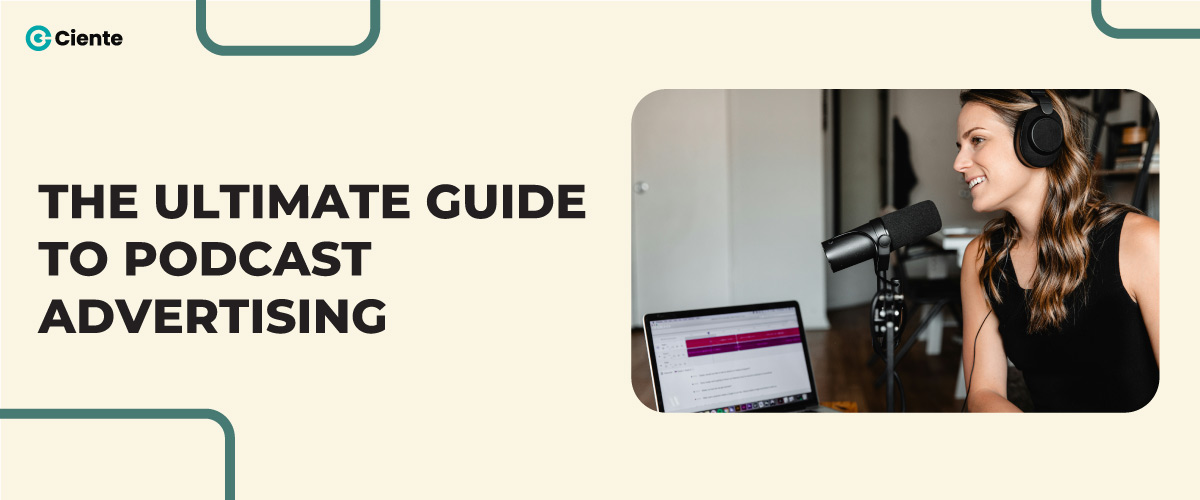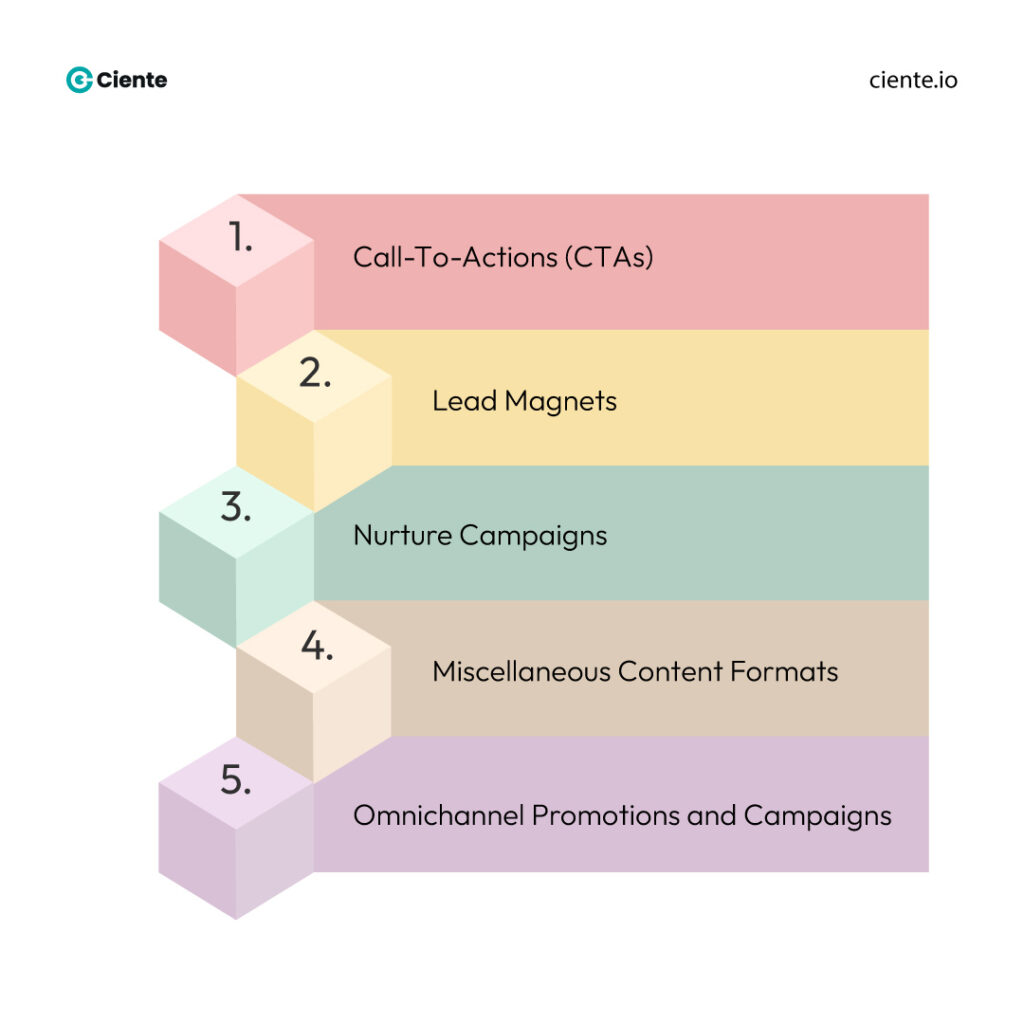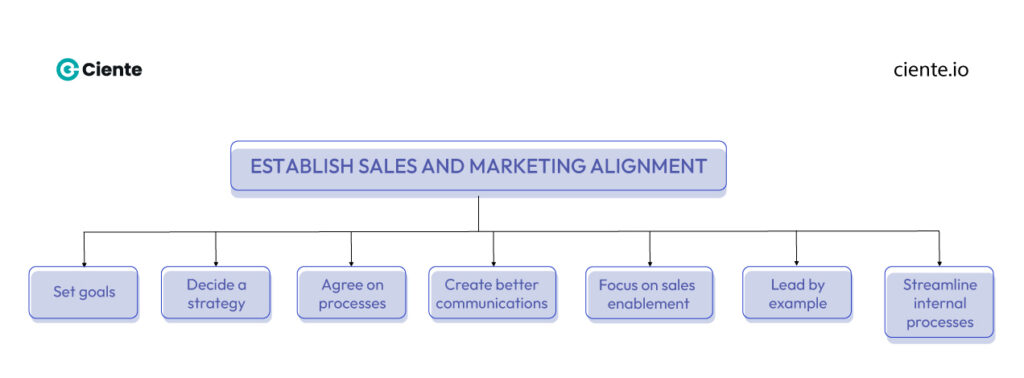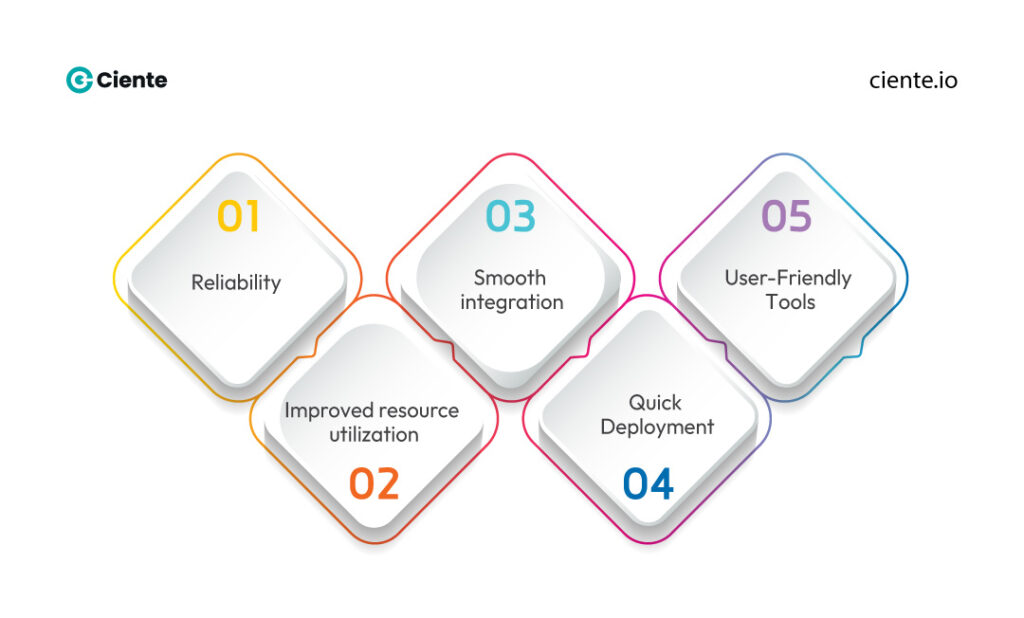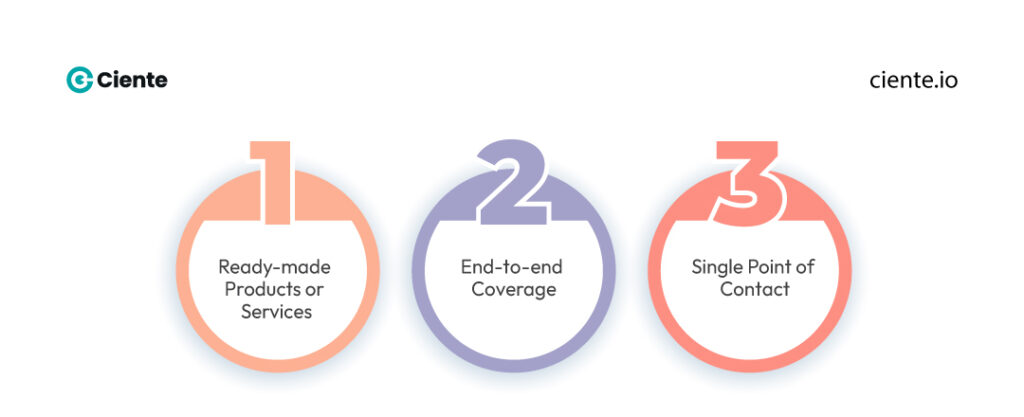The Ultimate Guide to Podcast Advertising
With advertisers keen to follow the trends, are podcast ads the ideal strategy to attract positive attention toward your brand?
Today, we can perform a single task in multiple ways due to the onset of AI and other technological advancements.
Remember newspaper advertisements? Feels like ancient history.
In this fast-paced digital era, we have conveniently moved to screens (at the cost of our eyesight!).
And if screens were not enough, humans have found another way to consume content – listening. As much as we run towards convenience and comfort in this modern age, our senses are at maximum capacity.
Making us believe that listening and not watching is more comfortable is a marketing tactic. Today, there are over 546.7 million podcast listeners worldwide in 2024.
Why have podcast become so common?
Podcasts mix education with audio entertainment to elevate your mindfulness while you continue with your daily tasks, propelling a significant transformation in the advertising landscape.
Yes, we do commonly associate advertisements with visuals. But how do you elevate your storytelling? By utilizing multiple formats to drive a niche and unfamiliar audience base.
How does advertising strategy work itself into podcasts? We will help you understand this.
Podcast Ads are an underrated but rapidly growing advertising front. They allow you to boost your brand awareness and establish trust when speaking to potential buyers.
In 2024, over $4.02 billion was spent on podcast ads.
These sponsored ads communicate through or during a podcast episode, an uncommon form of paid marketing.
You might wonder whether podcast advertising works the same as radio advertising. Yes, both advertising channels use digital audio ads delivered by the host and some personal experience with that product or service. Also, check Programmatic Advertising Strategies.
But podcast advertising is undeniably different from radio.
Radio ads reach a broad audience, are irrelevant to the content of the radio show, and may seem vaguely random. However, podcast ads centralize targeting. They are placed cautiously within an episode to reach a targeted audience for deeper engagement. The advertisement aligns with the contents of the podcast episode such that its placement seems natural.
In podcast advertising, the target is an interested audience. The only objective is to create purchasing intent.
According to Spotify 2024 Podcast Trends, over 45% of Gen-Z and millennials and 62% of total study respondents stated that they trust the promoted brand during a podcast due to the easy-going relationship the host shares with them. This resulted in talking and searching.
Podcasts take engagement one step further. They offer interactivity features such as polls, real-time Q/As, comment sections, anonymous stories and questions of the week sessions, video podcasts, etc., underscoring a personal and one-to-one relationship with the host.
Podcast advertising takes advantage of this easy-going mode of communication between the host and his audience.
Consider the most popular podcast platforms – Apple, YouTube, or Spotify. To listen to a podcast, users log into their accounts. Hence, advertisers gain in-depth insight into who is watching and listening to their content, guiding them toward curating more targeted ads.
Podcast Ad Types
Podcast ads are placed at an episode’s beginning, middle, or end.
As an advertiser, you have to consider where to place your ad. Placement is a significant component of advertising. The main objective of advertising is to boost your brand visibility and to help you how to market your brand.
How do you catch the attention of your audience? By providing them with a distraction-free environment.
The approaches you use – how – to place or insert an ad into a podcast episode decides the where. You can occupy the spot in an episode in two ways:
Baked-in Ads
This ad placement is permanent, added to the podcast audio file beforehand, appears anywhere within an episode, and is available as long as the episode is on the chosen platform.
Every unique listener hears the same ad. And, even when a new listener goes back to listen to an old episode, they can still hear the ad embedded within.
Dynamic Ads
This form of ad insertion is an ad placed in a chosen spot to reach a targeted audience.
Through dynamic ad insertion strategy, you can offer a better listening experience by personalizing the ad and ensuring that you help maximize the effectiveness of the client campaign.
Here, the ads stay updated because the older podcasts are embedded into new ads. When a listener reverts to an old podcast episode, they listen to the ads, monetizing the back catalogs.
Dynamic ads are inserted by matching the brand with the relevant episode across the category collections – inserting ads with the relevant podcast discussion topics.
Types of ads according to the placement
Following the ad insertion into a podcast, there are three types of ads according to the placement:
Pre-roll Ads
These are ads placed at the very beginning of a podcast episode.
While reading a novel, we rarely drop it in the beginning. We often DNF it as we cannot read beyond the middle mark.
Are placing ads at the beginning of a podcast effective? Most listeners hit play and linger near the device to listen to the episode, boosting the chances they hear the ad. Consequently, if the podcast listener is listening to one of their favorite podcast series, they might be inclined to let the ad play as it eventually leads them to the podcast audio.
Initially, listeners are more patient, so they remain concentrated on the ad content showcasing minimal interest in the services.
Mid-roll Ads
If the ads are banded together one after another at the beginning of the episode itself, your listeners could suffer from ad fatigue. As an advertiser, you place them strategically throughout the podcast episode, figuring out the perfect placement where the listener pays the maximum attention.
Mid-roll ads are placed in the middle of 10-minute or longer podcasts. Is this a lucrative spot?
When podcast listeners reach the middle mark of an episode, they are already engaged in a side activity like cooking or exercising. The strategy is that by being engrossed in a physical activity, they are less likely to pause the ad, allowing them to play through.
What a way to monetize our distractions!
Post-roll Ads
Post-roll ads witness the lowest possible audience.
Readers likely DNF a novel before they reach the second half. This also applies to podcasts.
Most listeners directly skip to the next episode before the current one ends. If this is the last episode of the podcast, they are also most likely to close the app before they have heard the last few words.
An ad placement may seem effective at the end of a podcast when the listeners are busy with another task, so they let the ending play. This is beneficial when the episode is the last one in the series or the next episode is yet to be published.
A risk you have to take!
We explore the three distinct ad formats after how to insert podcast ads in the different placements or spots.
One-size-fits-all is not the right approach here. You need to focus on ad delivery at this junction.
Podcast AD Formats
Which podcast ad format would generate the most interest and create a lasting impact on the audience?
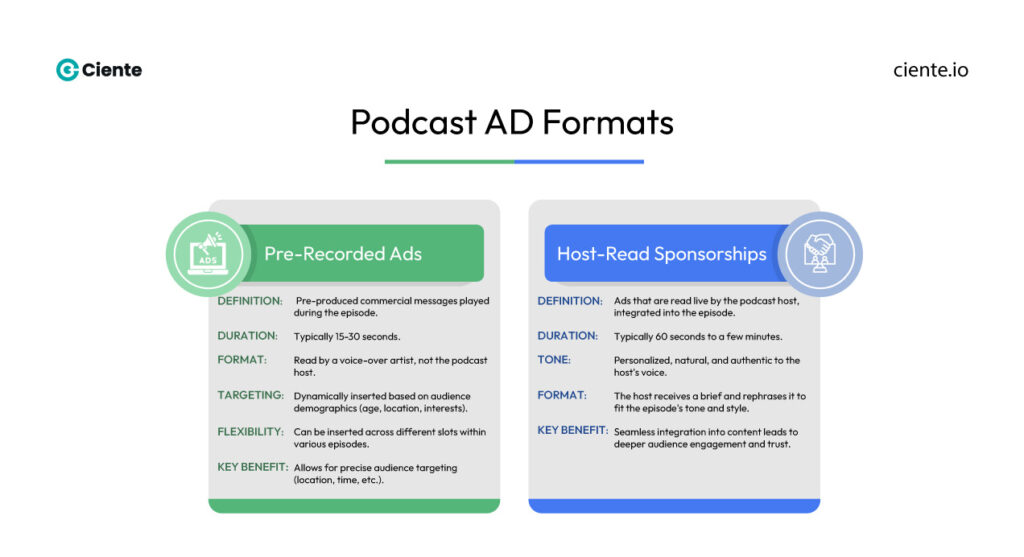
Pre-Recorded Ads
These ads are also pre-produced or announcer-read, targeting a specific audience demographic.
They are commercial messages relayed to the audience by, generally, a voice-over artist and not the host themselves. These are pre-recorded audio ads by the advertiser beforehand and then offered to the podcast host to play during an episode.
They run for over 15 to 30 seconds and are insertable across different slots.
Pre-recorded ads are dynamically inserted into the podcast to target a specific audience.
A targeting campaign helps the advertisers decide which audience should hear the ad based on demographics, geographic location, campaign dates, podcast categories, etc.
Host-Read Sponsorships
Have you ever heard of a live-read during live podcast episodes? Let me break it down for you.
A brand offers the podcast host a messaging brief and also provides sponsorship for the specific episode. After this, the podcast host puts this brief into their own words, changing its tone and fine-tuning it into more native, authentic, and creative content.
They blend it into the contents seamlessly to make it seem more natural. A connected shift in the ad entails more engaged listening from the audience, lasting over 60 seconds to a couple of minutes. It makes the audience think the ad is just another part of the episode.
Host-read ads are commercialized, edited into editorial messages, and recorded by the host. The benefit of host-read ad sponsorships is an improved listening experience resulting in deeper engagement.
In sponsor ads, the priority is driving engagement by blending relevant ads with native podcast content.
Long-Form Branded Episodes or Series
What does branded mean? It entails a sense of loyalty and responsibility.
A brand that wants to advertise on your platform sends a promotional message curated themselves. This could be a branded segment, episode, or entire podcast series.
The focus here is to be non-intrusive and centralize the tonality and voice of the message. The promotional message blends into the editorial content – a middle ground between the advertisers and the podcast host.
One content should not overpower the other, so the curated organic content that resonates with listeners should align with the ad message.
It has to utilize the loyalty and trust built between the podcast host and their listeners. It feels like a personal recommendation from a close friend.
Podcast Ads tap into the parasocial relationship the audience builds with the host.
By engaging and being invested in specific content, the audience sometimes develops an on-sided emotional connection with influencers, celebrities, athletes, etc.
This is what podcast ads take advantage of. And this is something that they monetize on.
It has become commonplace for brands to deliver their products or services to the host so that their talk regarding the experiences is more sincere.
In podcast advertising, listeners learn something new about a brand. Its appealing and informative content attracts attention from prospects, boosting purchasing intent and improving your performance across the overall marketing board.
It is not only helpful in lead generation but also in expanding your audience demographics. Podcast ads target a unique audience pool that is younger and has moved away from consuming traditional broadcast media channels.
By targeting younger audiences through podcasts, advertisers can target other audience pools through TV and radio advertisements without worrying about duplicate content.
Another benefit of podcast ads is their ability to have a multiplier effect on different ad formats, increasing the effectiveness of an ad campaign by offering new information about the brand and improving the authenticity of the brand experience.
And when combined, visual cues make podcast ads more memorable, i.e., boost memory retention.
Due to its diverse benefits and creative freedom, podcast ads have become one of the most trusted mediums for advertisers.
YouGov Research backs this by stating that the majority of their research participants felt more deeply connected when they heard a voice, a crucial element in personalized communication.
Podcast ads combined with sponsorships are the ultimate gateway for businesses of all sizes to boost their brand awareness. The diverse targeting methods, such as interest targeting and first-party integration, help advertisers reach the right audience at the optimal time.
Every business has an ideal audience pool, and podcast advertising has made it possible for advertisers to reach them.
But now that you are aware of the benefits that podcast advertising holds, how can you advertise ads on a podcast, and what are the relevant pricing to do the same?
You can implement measures as an advertiser to advertise your ad on a podcast.
- Decide the contents of your ad. What is your ad regarding, and what is its theme?
- Curate your audio ads and offer the main talking points to the podcast team.
- Look for the appropriate podcast. The relevant ad should blend with the native podcast. You may find the contact information of podcasters on social media and websites or reach out to the parent company.
- Finalize the ad placement. Decide ad placement and insertion beforehand, and finalize the pricing structure for podcast advertising.
The cost of placing an ad depends on different factors, such as the audience reading your ad, the number of spots booked, podcast popularity, the ad length, placement, and overall campaign duration.
Podcasts levy a fixed fee or place a charge per 1000 listeners – the cost per mile (CPM). The industry benchmark for podcast advertising is $8 CPM for 30-second ads and $25 CPM for 60-second ads.
- The period/duration for which the ad will remain in the podcast.
- How do you know you have chosen the right podcast? Track your ROI through vanity URLs, surveys, promo codes, and pixel-based attribution.
Podcast Advertising Effectiveness
Podcast advertising can serve as a unique and underrated marketing platform. But how do we gauge its effectiveness?
Particular podcast ad metrics help outline whether your campaigns drive your business growth. Podcasts are a cookie-less audio medium measured through listens rather than clicks or scrolls.
First, for basics, you may track the number of unique listeners who listened to your podcast at least once, comprising streams and downloads.
Second, there are specific attribution requirements mentioned beforehand that you can effectively measure depending on the ad content and funnel structure:
- Discount or promo codes: A unique redeemable promo code provided by the podcast host used during the checkout stage of the purchase. It helps track the number of purchases and the number of new buyers.
- Pixel-based attribution: How do marketing channels that use content marketing measure the success of their strategies? Through downloads.
Track ad exposure and overall website activity, i.e., every user action. However, how do you track user activity and web traffic once the user activity is taking place offline? The ways to track post-download engagement are complicated and limited.
While the RSS feed makes podcast distribution, i.e., downloading, streaming, and subscription easier, it complicates tracking. The user activity (listening) takes place offline once the podcast is downloaded onto the listener’s device.
How do we track the web traffic then? Pixel-based attribution.
This podcast measurement technique uses the available user data point to match the listener’s unique identifier with the purchaser’s unique identifier even when online cookies are absent.
- Surveys: In marketing and advertising, it is crucial to assess whether the channels are effective. It is not easy to analyze or anticipate the exposure, response, and effectiveness, hence, post-conversion surveys help outline the elements influencing the customer‘s decisions.
- Vanity URLs: Vanity URLs are unique, easy to remember, and shorter versions of longer podcast links. It mentions where the link will guide the listeners.
It is as easy to assess podcast traffic as other digital media.
Podcast advertisers, to accurately and reliably, analyze the traffic depend on insights illustrating the delivery and outcome of the podcast such as impression, frequency, and reach.
Research states that podcast listeners show favorable consumer behavior due to the positivity exuded by podcast advertising.
Margaret Moe in “Podvertising: Podcast Listeners’ Advertising Attitudes, Consumer Actions, and Preference for Host-Read Ads” published in the Journal of Economics and Behavioral Studies outlines how listeners engage, interact, and react to podcast ads, especially host-read ads.
The research outlines the correlation between podcast advertising attitudes, the authenticity of the host, and the preference for host-read ads. They prefer ads from regular contributors due to the authenticity and trust between them and their favorite podcast(er) host.
With a staggering increase in podcast listeners, advertisers can build more opportunities to nurture engaged listeners interested in listening to host-read ads and purchasing the services discussed.

